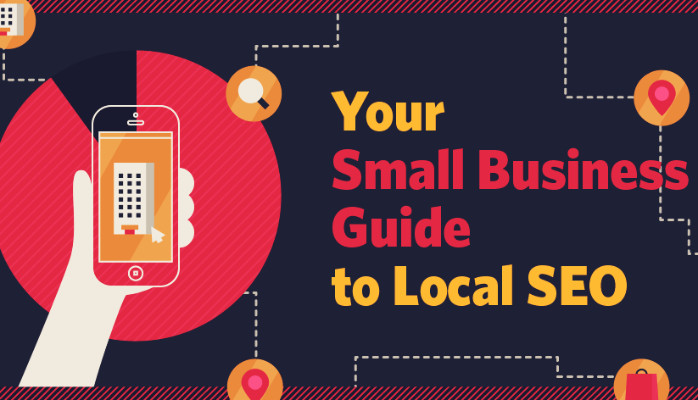E-commerce SEO is critical for ensuring that your online store ranks well in search engine results. Unlike traditional websites, e-commerce platforms face unique SEO challenges, such as managing product pages, category hierarchies, and handling large volumes of content.
With proper SEO, you can significantly boost traffic and sales. In this article, we’ll cover the top 10 SEO tips to improve the visibility of your e-commerce site and increase conversions.
1. Conduct Targeted Keyword Research
Keyword research is the backbone of e-commerce SEO. To drive the right traffic to your site, you need to identify keywords that potential customers are using when searching for products.
- Long-Tail Keywords: Focus on long-tail keywords, which are more specific and have a higher conversion rate. For example, “best leather office chairs for small spaces” is more targeted and buyer-focused than just “office chairs.”
- Use Tools: Utilize tools like Google Keyword Planner, SEMrush, or Ahrefs to discover keywords with high search volumes and low competition.
- Search Intent: Always keep in mind the search intent—whether users are looking for information, are ready to buy, or want to compare products.
2. Optimize Product Pages
Product pages are the heart of your e-commerce website, and they need to be optimized both for search engines and user experience.
- Unique Product Descriptions: Avoid using manufacturer descriptions, as these are duplicated across multiple websites. Write original, informative product descriptions that highlight the benefits and features of the product.
- Include Keywords: Naturally incorporate primary and secondary keywords into your product titles, meta descriptions, and product copy.
- Optimize Images: High-quality images are essential, but don’t forget to optimize them. Compress your images for faster load times and include descriptive alt text with keywords.
3. Leverage User-Generated Content
User-generated content (UGC), like reviews, can significantly boost your SEO by providing fresh, unique content and adding keywords that real customers use.
- Encourage Reviews: Include a review section on each product page to build credibility and provide additional keyword-rich content.
- Q&A Sections: Add a Q&A section to product pages where customers can ask questions. Answering them not only helps potential buyers but also increases the keyword variety on the page.
- Incentivize UGC: Offer incentives like discounts or loyalty points for customers who leave reviews, encouraging more user interaction.
4. Focus on Mobile Optimization
With the majority of e-commerce traffic coming from mobile devices, optimizing your site for mobile is crucial.
- Responsive Design: Ensure that your website is fully responsive, providing a seamless shopping experience across desktops, tablets, and smartphones.
- Fast Load Times: Mobile users are less patient with slow websites. Compress images, minimize JavaScript, and leverage browser caching to reduce loading times.
- Use AMP (Accelerated Mobile Pages): Implement AMP to ensure fast load times on mobile devices, which can improve both rankings and user experience.
5. Create High-Quality Content Beyond Product Pages
Content marketing can drive organic traffic to your e-commerce store by targeting informational keywords that potential customers are searching for.
- Write Blog Posts: Create content that answers common questions related to your products. For example, if you sell running shoes, you could write a post like “How to Choose the Right Running Shoes for Marathon Training.”
- Link to Products: In your blog posts, naturally link to relevant products and categories to drive traffic directly from content to your product pages.
- Video Content: Use product videos or tutorials that showcase your products in action. Video content can improve engagement and dwell time on your site.
6. Optimize Category Pages
Category pages often target broad keywords and have the potential to rank well in search results. Optimizing these pages is just as important as optimizing product pages.
- Use SEO-Friendly URLs: Ensure category pages have clean, keyword-rich URLs like “www.yourstore.com/men-shoes” instead of “www.yourstore.com/category123.”
- Add Keyword-Rich Content: Include a descriptive introduction to your category pages that incorporates primary keywords. Avoid creating “thin” content on these important pages.
- Internal Linking: Add links to related subcategories or products within your category pages to improve internal link structure and enhance user navigation.
7. Use Structured Data (Schema Markup)
Structured data helps search engines understand your website content better and can make your listings eligible for rich snippets in search results.
- Product Markup: Implement schema markup for product pages to provide detailed information like price, availability, and reviews in search results.
- FAQ and Review Markup: Use FAQ and review schema to make your content more interactive in search engine results and improve your click-through rates (CTR).
- Breadcrumb Markup: Adding breadcrumb structured data can improve navigation for both users and search engines, potentially improving rankings.
8. Improve Site Speed
Site speed is a crucial ranking factor, especially for e-commerce stores, where a slow-loading page can lead to high bounce rates and lost sales.
- Compress Images and Files: Use tools like TinyPNG to compress large images without losing quality. Compress your CSS and JavaScript files to reduce load times.
- Use a Content Delivery Network (CDN): CDNs distribute your content across multiple servers globally, ensuring faster load times for users in different regions.
- Minimize Redirects: Too many redirects can slow down your site. Try to limit them and keep your site architecture simple and efficient.
9. Optimize for Local SEO
If your e-commerce store has physical locations or offers local delivery, optimizing for local SEO can help attract nearby customers.
- Google My Business: Claim and optimize your Google My Business listing by adding your business name, address, phone number (NAP), and other relevant details.
- Local Keywords: Target local keywords such as “best running shoes in New York” or “same-day delivery laptops in London.”
- Create Location-Specific Pages: If you have multiple store locations, create a dedicated, SEO-optimized page for each location with specific information, opening hours, and location-based offers.
10. Monitor and Audit Your SEO Performance
SEO is an ongoing process, and regular monitoring is essential to ensure that your efforts are paying off.
- Use Google Search Console: Track your website’s performance, identify crawl errors, and monitor keyword rankings using Google Search Console.
- Set Up Google Analytics: Keep track of key metrics such as organic traffic, bounce rate, and conversion rates. Identify which pages are performing well and which need improvement.
- Regular SEO Audits: Perform regular SEO audits to ensure there are no technical issues, broken links, or other problems affecting your rankings. Tools like Screaming Frog and Ahrefs can help with this.
Conclusion
E-commerce SEO is a complex but rewarding process. By implementing these top 10 SEO tips—ranging from keyword research to site speed optimization—you can significantly improve your store’s visibility in search engine results.
Remember that SEO is an ongoing effort, so continually monitor your performance, make improvements, and keep up with the latest trends to stay ahead of the competition.




